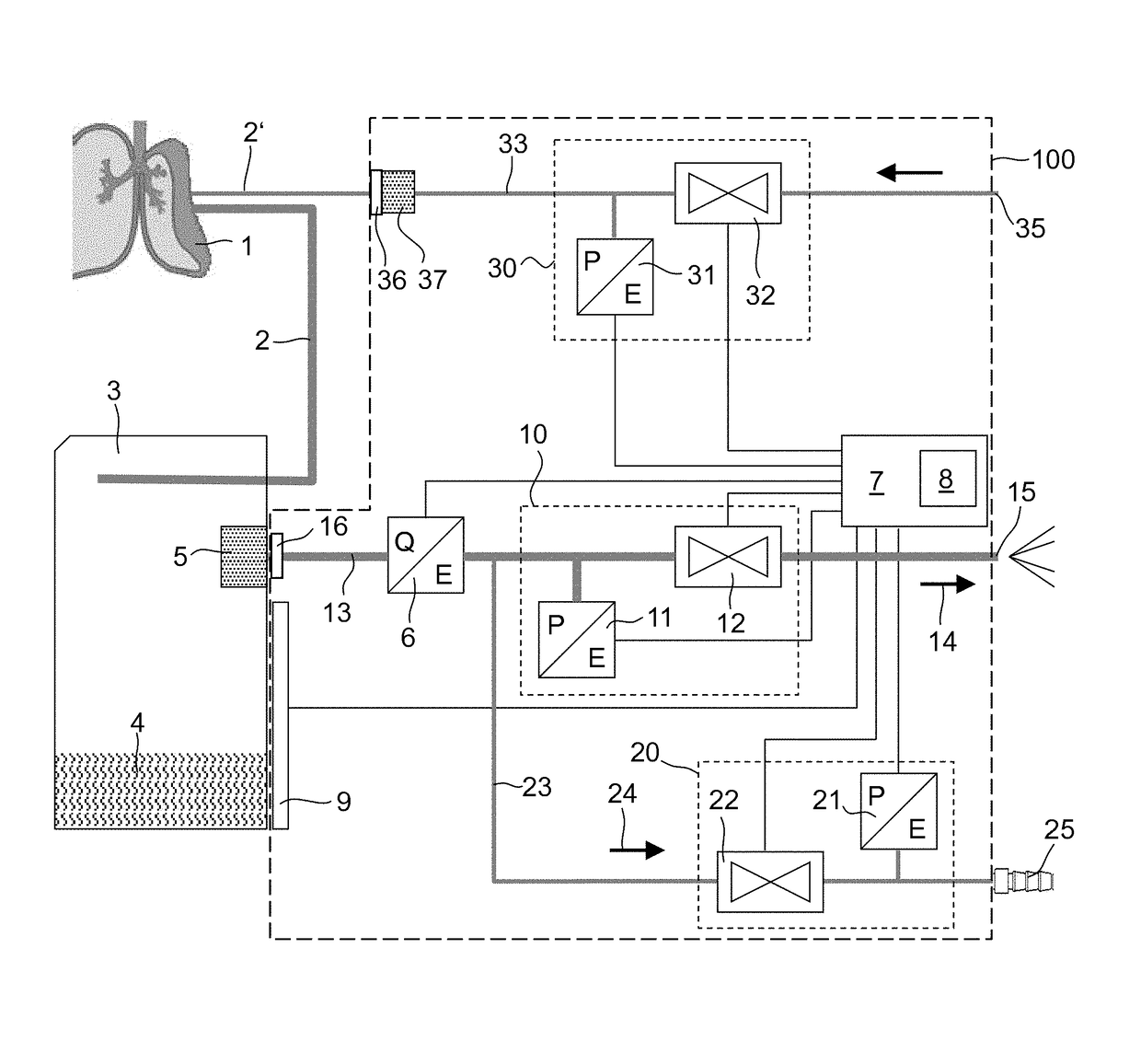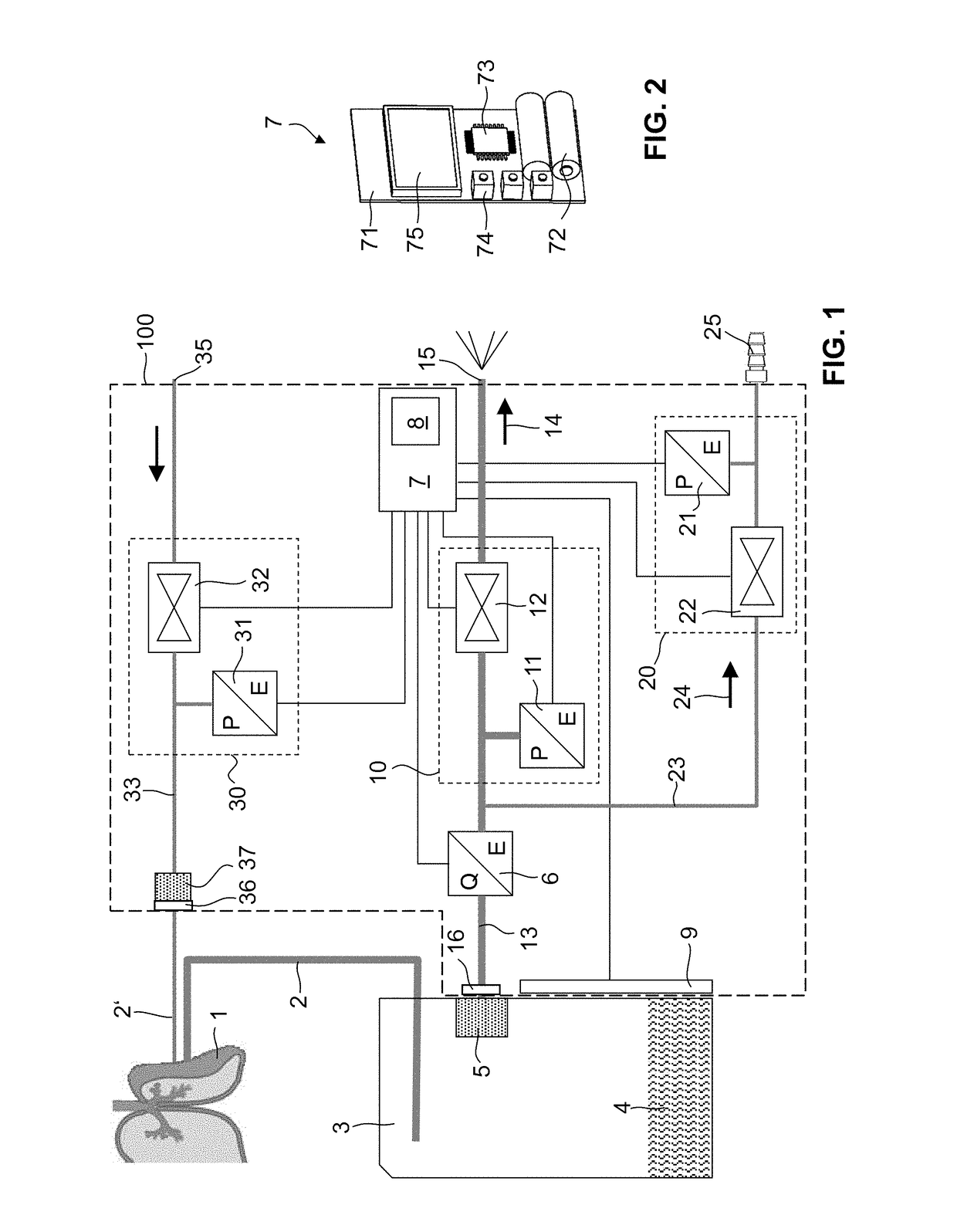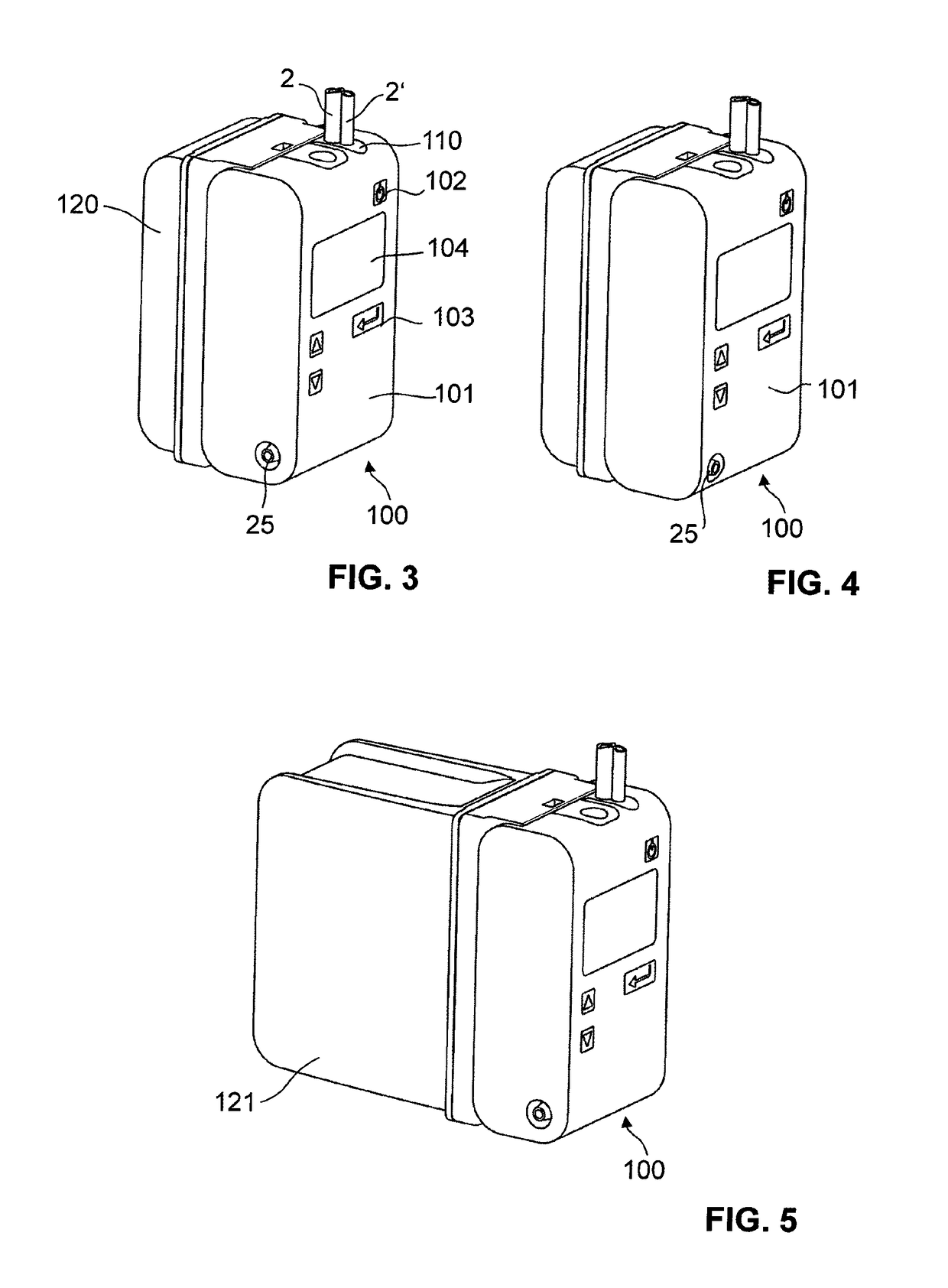Thoracic drainage device having reduced counter-pressure
a technology of thoracic drainage and counter-pressure, which is applied in the field of thoracic drainage devices, can solve problems such as cases not beneficial to the healing process, and achieve the effect of facilitating the patient's force to air
- Summary
- Abstract
- Description
- Claims
- Application Information
AI Technical Summary
Benefits of technology
Problems solved by technology
Method used
Image
Examples
Embodiment Construction
[0058]FIG. 1 is a schematic diagram of a thoracic drainage device 100 according to the invention. The pleural cavity 1 of a patient is connected to a secretion collection container 3 via a drainage catheter (not shown) and via a drainage line 2 attached to said drainage catheter. This secretion collection container 3 is used to separate liquid and gaseous constituents. The liquid secretions 4 collect at the bottom of the secretion collection container 3, while the gaseous constituents (principally air) pass through a filter 5 and via a container connector 16 into a vent line 13. First a flow sensor 6 and then an electrically controllable vent valve 12 are arranged in succession in the vent line 13, as seen in the direction of flow 14. In the opened state, the vent valve 12 frees the vent line 13 to the atmosphere at an outlet 15. A container pressure sensor 11 measures the pressure between the flow sensor 6 and the vent valve 12. This pressure sensor can also be arranged upstream of...
PUM
 Login to View More
Login to View More Abstract
Description
Claims
Application Information
 Login to View More
Login to View More - R&D
- Intellectual Property
- Life Sciences
- Materials
- Tech Scout
- Unparalleled Data Quality
- Higher Quality Content
- 60% Fewer Hallucinations
Browse by: Latest US Patents, China's latest patents, Technical Efficacy Thesaurus, Application Domain, Technology Topic, Popular Technical Reports.
© 2025 PatSnap. All rights reserved.Legal|Privacy policy|Modern Slavery Act Transparency Statement|Sitemap|About US| Contact US: help@patsnap.com



